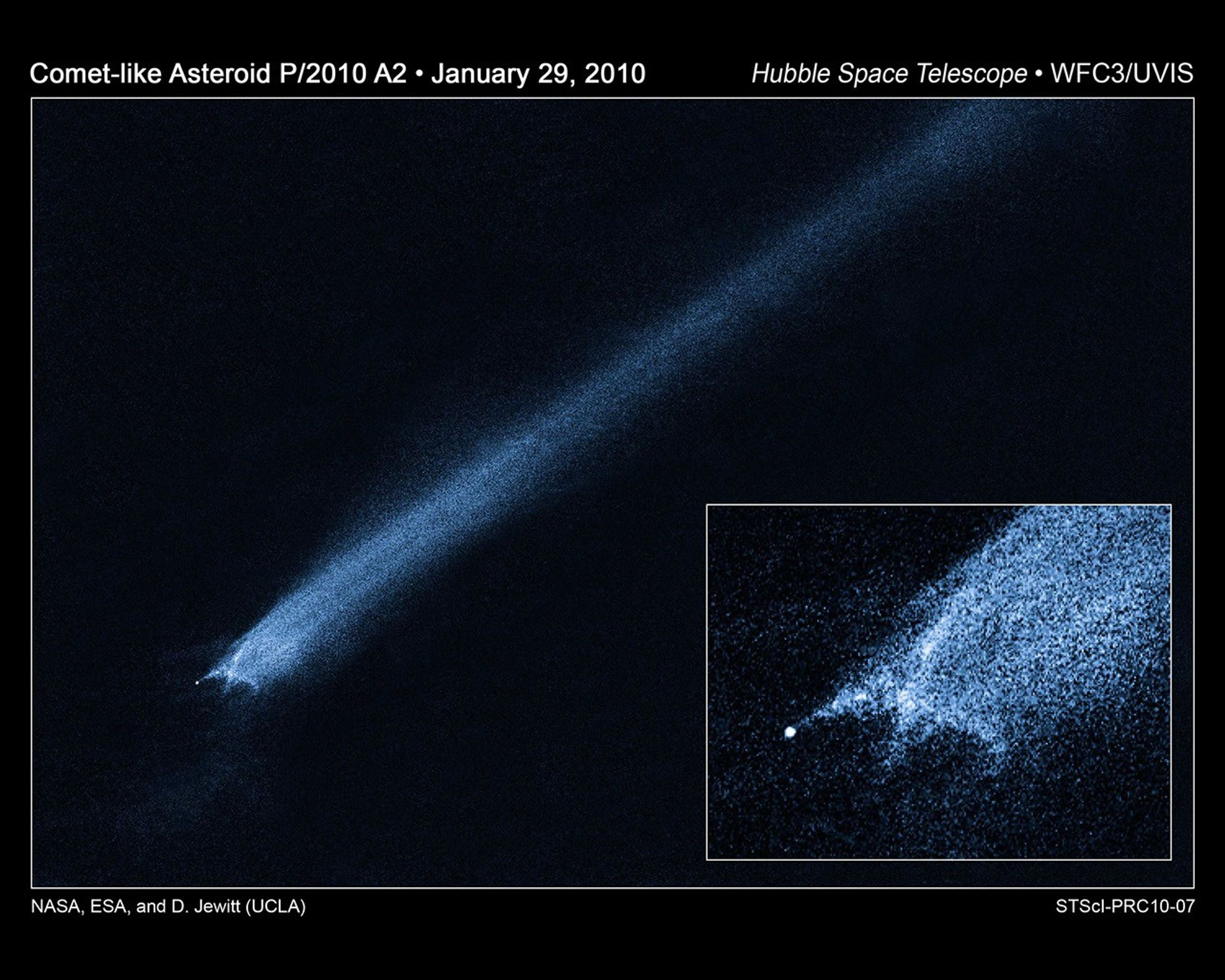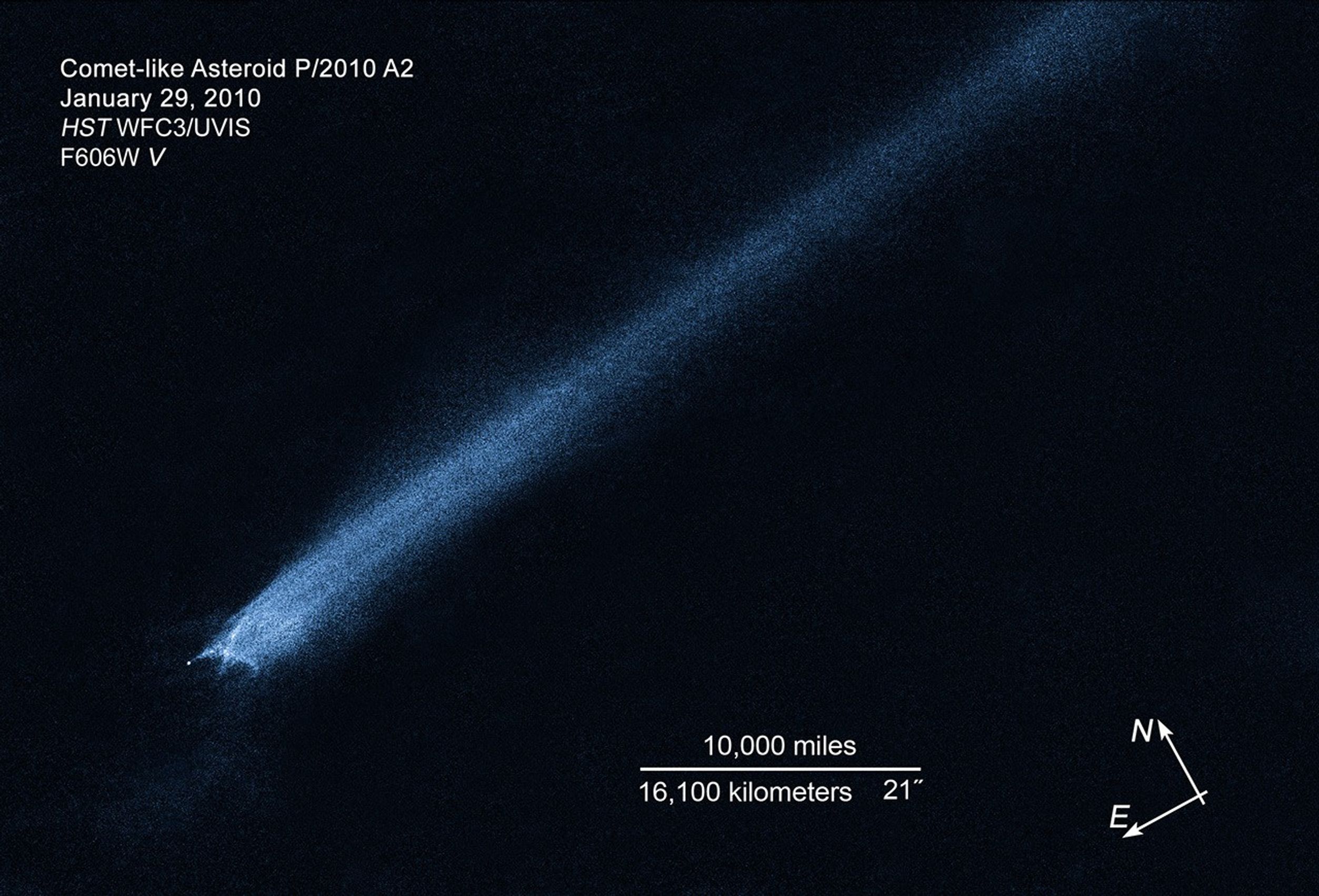1 min read
Close-up of Comet-like Asteroid P/2010 A2

About the Object
- DistanceDistanceThe physical distance from Earth to the astronomical object. Distances within our solar system are usually measured in Astronomical Units (AU). Distances between stars are usually measured in light-years. Interstellar distances can also be measured in parsecs.100 million miles (160 million km) from Earth.
About the Data
- Data DescriptionData DescriptionProposal: A description of the observations, their scientific justification, and the links to the data available in the science archive.
Science Team: The astronomers who planned the observations and analyzed the data. "PI" refers to the Principal Investigator.The image was created from Hubble data from proposal 12053: D. Jewitt (UCLA), H. Weaver (JPL/APL), M. Drahus (UCLA), and M. Mutchler (STScI). - InstrumentInstrumentThe science instrument used to produce the data.HST>WFC3/UVIS
- Exposure DatesExposure DatesThe date(s) that the telescope made its observations and the total exposure time.January 25 and 29, 2010
- FiltersFiltersThe camera filters that were used in the science observations.F606W (V)
- Object NameObject NameA name or catalog number that astronomers use to identify an astronomical object.Comet-like Asteroid P/2010 A2
- Object DescriptionObject DescriptionThe type of astronomical object.Asteroid Belt Impact Object
- Release DateFebruary 2, 2010
- Science ReleaseSuspected Asteroid Collision Leaves Odd X-Pattern of Trailing Debris
- Credit

Color Info
Color InfoA brief description of the methods used to convert telescope data into the color image being presented.
This image was originally black and white and recorded only overall brightness. These brightness values were translated into a range of bluish hues. Such color "maps" can be useful in helping to distinguish subtly varying brightness in an image.
Related Images & Videos

Hubble Views of Comet-like Asteroid P/2010 A2
This is a NASA Hubble Space Telescope picture of a comet-like object called P/2010 A2, which was first discovered by the LINEAR (Lincoln Near-Earth Asteroid Research program) sky survey on January 6. The object appears so unusual in ground-based telescopic images that...
Share
Details
Last Updated
Aug 17, 2025
Contact
Media
Claire Andreoli
NASA’s Goddard Space Flight Center
Greenbelt, Maryland
claire.andreoli@nasa.gov






























